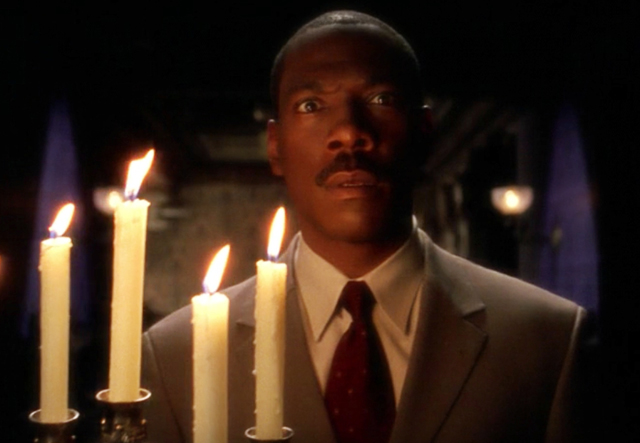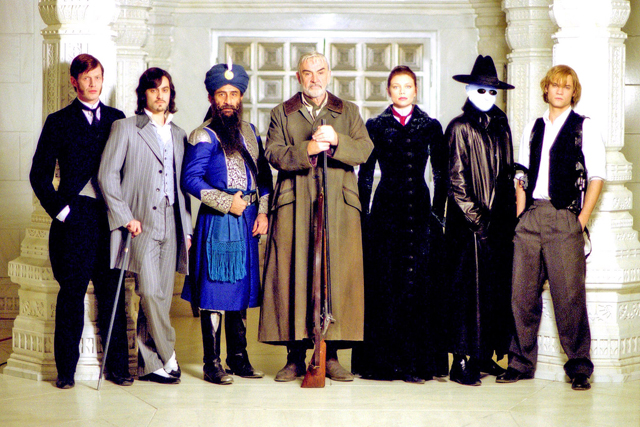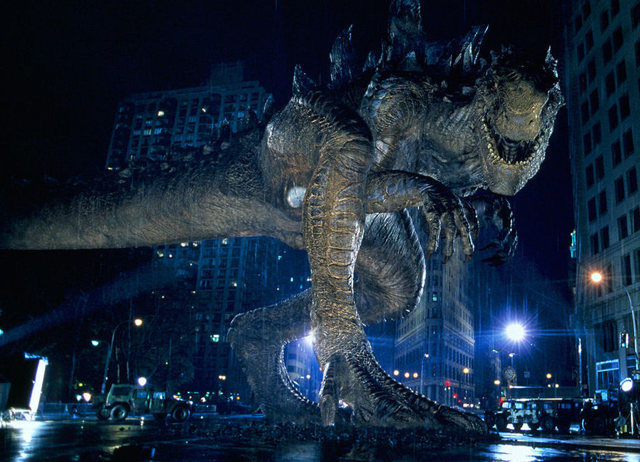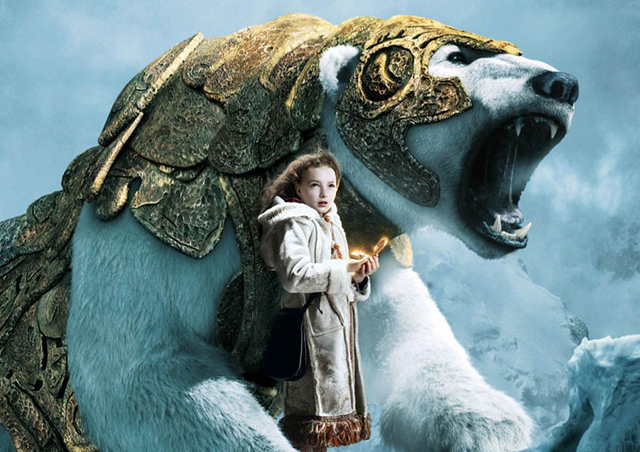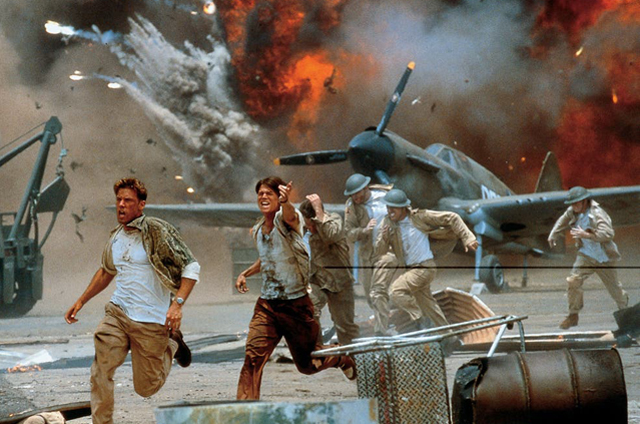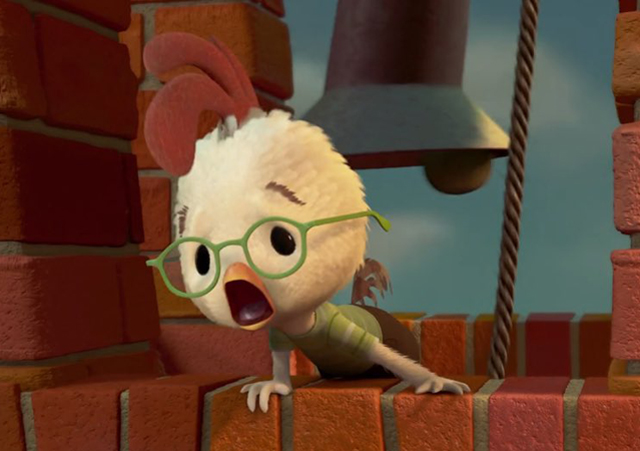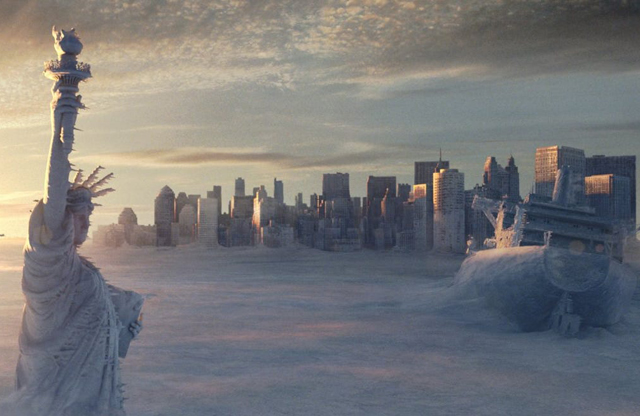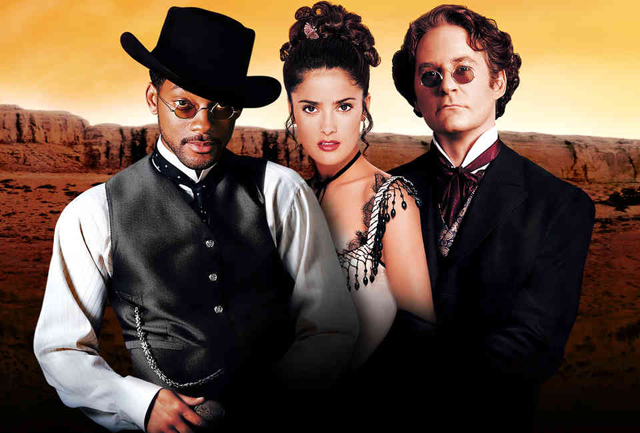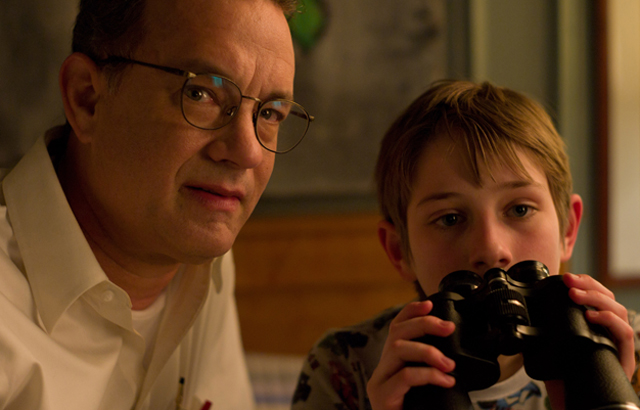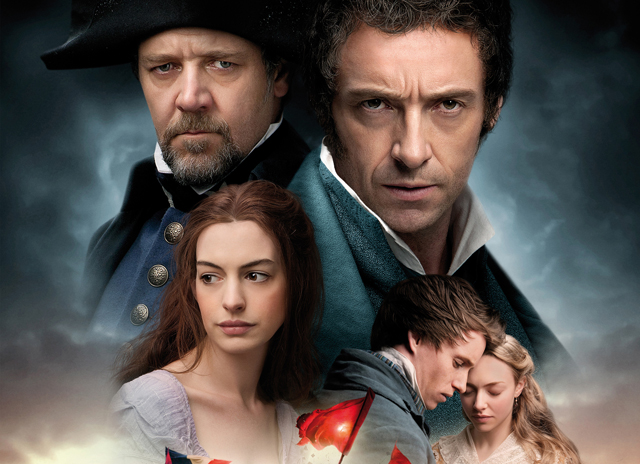
Movie musicals can be very much a coin flip at the box office. Many times some of the biggest flops in Hollywood history have been stage to screen adaptations, while at other times they have been a box office savior. We’ve seen cases where a musical gone wrong can destroy a filmmakers reputation, like how Gene Kelley stopped directing after the disastrous production of Hello Dolly (1969). But then you have The Sound of Music (1965), which helped to pull 20th Century Fox out of the financial hole they dug for themselves after the loses from Cleopatra (1963). A lot of the time, movie musicals are susceptible to the ebbs and flows of audience tastes more than any other genre in film-making. For the longest time, movie musicals had been considered box office poison after the late 60’s crash in the genre, and it wouldn’t be until the new millennium when it would start to come back in a big way. The return of musicals came about with the box office and awards success of both Moulin Rouge (2001) and Chicago (2002), with the latter earning a Best Picture win at the Oscars, the first since 1968’s Oliver. This sudden renewed interest in the genre stirred Hollywood to look to Broadway once again for musicals that were ripe for adaptation. Even as Hollywood had abandoned the musical for decades, Broadway was in it’s heyday, churning out mega-hit shows that became famous the world over, without ever needing to make the jump to the big screen like they had in Hollywood before. Once it became profitable to make movie musicals again, the floodgates were finally opened up to get these popular stage musicals translated to the big screen. But, as we’ve seen many times before, what played well on the stage may not necessarily translate the same way on film. The quarter century has seen a few Broadway shows successfully get the big screen treatment, including the aforementioned Chicago, as well as Dreamgirls (2006) and Sweeny Todd; The Demon Barber of Fleet Street (2007). But at the same time, we’ve also seen many examples of musicals that fall flat when they make the jump to cinema.
Perhaps one of the harshest falls from stage to screen is the long anticipated 2012 translation of the musical Les Miserables. Les Miserables should have been a no-brainer adaptation for a movie musical. The source material is one of the most famous works of literature, the 1862 novel of the same name by Victor Hugo, which on it’s own has spawned numerous non-musical film adaptations. It was translated into a musical in France by the team of lyricist Herber Kretzmer and composer Claude-Michel Schönberg, before eventually being picked up by musical theater mega-producer Cameron Mackintosh for the London West End, and then eventually on it’s way to Broadway. Once it made it’s way to the Great White Way, it became a smash hit, eventually running continuously for over 16 years, plus numerous revivals. It’s also got one of the most profitable touring productions in musical history, having been seen by audiences all over the world. So, why did it take nearly 30 years for there to be a movie adaptation for this legendary Broadway show? It wasn’t for the lack of trying. The musical languished in development hell for decades, being passed around from studio to studio and through a slew of interested directors, including Alan Parker and Bruce Beresford. What caused so many pauses in development was due to struggle to fill the extensive ensemble with the right actors. Cameron Mackintosh, who was in charge of the movie rights, wanted the musical to feature a cast worthy of the epic material. But considering the fact that movie stars and Broadway performers don’t always align given the different kinds of disciplines, it was difficult to get a cast of actors who could do justice to the material and bring in the box office appeal as well. It also mattered who was going to be behind the camera as well. It took a while, but the musical eventually got the momentum it needed thanks to the renewed popularity of the genre in the 2000’s. But, once cameras got rolling, the dreams of a perfect translation to the screen would ultimately prove fleeting.
One of the most baffling decisions in the film’s development was in giving the directorial reigns to Tom Hooper; a filmmaker with no background in music whatsoever. Hooper had made a name for himself as a television director, first on the BBC and then eventually on HBO, with acclaimed mini-series like Elizabeth I (2005) and John Adams (2008). He won accolades for his cinematic debut The Damned United (2009), but it was his follow-up that would truly put him on the map in Hollywood. The King’s Speech (2010) became a surprise powerhouse during it’s awards season run, and would eventually take home Best Picture at the Oscars, as well as a surprise Best Director win for Hooper. With his Oscar darling now on his resume, Hooper was prime to take on any prestige project he wanted. And at this time, the team in charge of the current development for Les Miz was looking for their director. Hooper, for all accounts, is a competent director. He delivers his movies and TV episodes on time and up to that point on budget. Given that he had this workman quality about him, it seemed to the producers that he might be a good choice to undertake this grandiose project, given that he had the prestige without the baggage. But, despite having some critical success, nothing about his background would tell you that he could make a musical. Hooper’s style is very grounded in reality, which has made him a success at directing historical dramas, because of his ability to capture the look and feel of a bygone time period. You could say that would work for a strait forward adaptation of Les Miserables, akin closer to the source novel. But he was being assigned to that kind of movie; he was going to be making a musical. And musicals are far from grounded. By the very nature of characters breaking out into song musicals exist in this kind of heightened reality. And as a result, you can’t just film it like another period drama. That is where the fault in the hiring of Tom Hooper lies; he was a wrong fit for the material.
The big problem with Tom Hooper’s adaptation of Les Miserables is that it feels small. On the stage, the musical takes on this operatic magnitude, with the actors signing to the rafters and set design, as abstract as it may be in some productions, evoking the grandeur of the story it is telling. Now, you can see that plenty of money was spent on the production. There are lavish sets built to replicate France in the 1820’s and the costume design is period accurate as well, and owing very much to the inspiration of the original musical and the original book illustrations. But, Hooper never gives us a good look at any of it. His camera is held in tight on his actors, shot low and handheld like he was making a documentary. It may be that he is trying to give the movie a visceral feel by putting the audience in the middle of the action, but it robs the story as well as the musical numbers of their impact. Movie musicals should have a grandiosity to them, as by their nature they are meant to be spectacles. That’s why musical numbers are often referred to as show stopping moments, because they stand on their own as big showpieces. Hooper doesn’t seem to get that, and all of his musical numbers are filmed in this same actor focused way. That may well work for one or two numbers to help set them apart. Many have praised the one-shot take of the iconic “I’ve Dreamed a Dream” number within the film, but that song would have had an even bigger impact if it didn’t look like every other song in the movie. The best movie musicals make all their songs feel distinct, with different stylistic choices used to set them apart. But, Hooper’s direction doesn’t give the songs a chance to stand out. And the lavish set pieces just kind of blend into the background as the actors are focused on with all their close-ups. Most of the movie is really demanding wide angle shots, allowing the audience to see how epic this story really is. The most absurd missed opportunity is with how the barricades are visualized. Once one of the most mind-blowing set pieces on the Broadway stage just feels puny and insignificant when realized in the movie. The barricades should feel imposing and instead it looks like it could come crashing down without much effort. It’s a perfect example of how much Hooper missed the mark in bringing the musical to the big screen.
Of course, another make or break element of any movie musical is the effectiveness of the ensemble cast. Les Miserables is not a musical that you should casually fill with any movie star. The roles are demanding and require actors with powerful voices to carry the complex tunes. For the movie, the casting in general is a mixed bag. In some cases they found the right actors; mainly the ones they pulled right off the Broadway stage like Aaron Tveit as Enjolras and Samantha Barks as Eponine. But these are usually the ones who have the minor roles. The headliners are in general more hit and miss, with one in particular being a big miss. One thing that does the actors a disservice in the film is Tom Hooper’s insistence on live recordings of each song. Musical films are typically not filmed that way, as songs are usually per-recorded by the actors beforehand and they are played back on set so that actors can focus on their performance without having to concentrate on their singing. Once again, it points out Hooper’s lack of experience when it comes to filming musical numbers, so the actors’ performances feel constrained as they are having to both act and focus on their singing. It’s doable, but it also works against the way the songs sound in the end. This is very much evident with actors like Eddie Redmayne as Marius and Amanda Seyfried as Cosette. Sure they are capable of singing, but the pressure to get the melody right often causes their performances to feel flat. The only one who seems to rise above this limitation is Anne Hathaway in the role of Fatine. This is one of the most demanding roles in all of musical theater, and she seems very aware of that and took it as a personal challenge. Her performance of “I Dreamed a Dream” was filmed in a single unbroken shot, and with the fact that it was a live recording as well, it mattered that she get it right. It probably took a number of takes, but they got what they wanted out of her performance and she has the Oscar win today to show for it. But in general, the pressure of recording the song live stifles the actor’s ability to improvise, as what they sing will also be what’s given over to the soundtrack. It may work when the actor feels they do their best singing on set, like Rex Harrison wearing a hidden microphone in his tie during the making of My Fair Lady (1964), but to impose that on the whole cast is putting up an unnecessary barrier for their style of performance.
And then you have the cases of actors who are just not right for the roles. Unfortunately for this version of Les Miserables, the worst choices in casting were the two leading stars. First off, there’s Hugh Jackman as Jean Valjean. Jackman is undoubtedly one of the most talented musical performers the world has seen in quite sometime. He already had numerous runs headlining on Broadway leading up to being cast in this film, which gave a lot of people confidence that he was going to shine in this film as well. But here’s the thing, Jean Valjean is not the kind of role that plays to his strengths. Jackman is at his best when he’s a song and dance man, showing off his physicality just as much as his vocal range. Jean Valjean does not give him as much to work with other than just standing and singing. And the kind of singing is also a bit out of range as well. Hugh’s typically a baritone, but the role of Jean Valjean requires a tenor, so when you hear him try to sing these songs, you can really hear the strain in Hugh’s voice. You’ve got to give him the credit for trying, but it might have served the movie better if they could’ve given the role to a more natural sounding tenor. Overall, Hugh Jackman just feels miscast and that the performance just does not use his skills as a musical performer to their fullest. But his misplacement in this film is nothing compared to Russell Crowe in the role of Inspector Javert. Javert is one of the most coveted roles in musical theater, with some of the most powerful songs in the entire musical. So, why did the filmmakers think that Russell Crowe was the guy for the part. He doesn’t have the bass-baritone range required for the character and his only musical experience is having his own rock band. This was clearly a case where the studio wanted a well known name in the part, and the Oscar-winning Gladiator star fit the bill. His performance is the thing that is pretty much universally panned across the board with this movie; even amongst the film’s defenders. He’s the one actor where the live recordings did an especially big disservice, as he just sounds like a high school drama student trying too hard to hit every precise note. It’s embarrassingly stilted performance where you’re aware of every sour note Crowe delivers.
While the performances themselves have many unfortunate limitations, there’s inherent problems within the musical itself that pretty much makes a translation to the big screen impossible. Les Miserables is different from a lot of other Broadway musicals in that it’s not a heavily choreographed show. For the most part, Les Miz is noteworthy for it’s actors not doing acrobatic, intricate dances on stage, but rather for standing still in the glow of spotlight and singing. With the right light design and an actor capable of singing to the rafters, you can make that compelling on stage. But, translating that to the screen just creates too much stillness. There isn’t a whole lot of physicality in the film, just a lot of actors standing in a room and singing. And that just makes a film like this boring. There’s no spotlight to draw the audiences eye. Again, Hooper’s docu drama like approach just makes every shot look exactly the same, so these songs that are supposed to be emotionally wrenching just are not. That in the end is the most glaring failure of Tom Hooper’s Les Miserables; it a crushing bore. And the failure is all the more crushing because you could see how this movie could’ve been great. It’s based on one of the all time most celebrated musicals, adapted from one of the great books of western literature. It has an all-star cast with actors who do have the ability to sing (mostly), and it clearly had a lot of money put into the production. To me, the movie musicals that have a lot going for it and end up squandering it all are the worst kind of musicals. Even among other bad musicals this one really falls below the standard. In all honesty, I would rather re-watch another disastrous movie musical directed by Tom Hooper named Cats (2019) over this one any time. Don’t get me wrong, Cats is an absolute disaster as well, and on the surface much worse in every way compared to Les Miz. But, it’s also never boring. Part of the appeal for some with the movie Cats is the train-wreck aspect of it all, and it shockingly has gained a bit of a reputation as a camp classic. The same cannot be said about Les Miz, which is just a depressing experience that is not worth revisiting.
My hope is that this is not the definitive movie version of this musical. Maybe someday we might see another filmmaker come in and try to do justice to the material. This musical definitely demands a grander scope to it; something like the grand 70mm musicals of the mid-century Hollywood period, and not the flattened down version that we got here. In general, what hurts the movie the most is the wasted efforts of all involved. Tom Hooper is clearly out of his element here, and is far better suited for simple, elegant historical dramas, like the movie that was his follow-up, The Danish Girl (2015). Of course, Hooper did make the mistake of going back to musicals with Cats, but that production strangely showed some growth in him as well as it didn’t have the same boring aesthetic that he gave Les Miz. The problems with Cats extended well beyond Hooper’s direction, so he’s not the reason that it failed as much as he was the problem with this movie. Overall, Les Miserables is just a poorly staged production, with uninspired musical numbers, awkward performances, and no sense of the enormity of the story it is trying to tell. To be frank, I do know that my feelings about the movie are not shared by the whole of the critical community. The movie in general did receive a lukewarm reception from critics, and it was a box office success, and did walk away with some Oscar gold. But, over the years, it also has lost a lot of it’s luster. No body celebrates it as one of the all time great movie musicals, and the only times it is discussed is with the things that people remember hating about it, particularly the whole Russell Crowe of it all. For critics like me, it’s the missed opportunity that hurts the most. It should have been great and instead it’s less than average. All the performers in this movie have thankfully gone on to bigger and better things. Hugh Jackman just finished an acclaimed run on Broadway in a Music Man revival, and his co-star Eddie Redmayne just began one for Cabaret. Russell Crowe thankfully has kept his singing career off the screen and on the stage with his band. And the genre of the musical still thrives and has seen better adaptations over the years; and it doesn’t show any signs of slowing down with something like Wicked on the horizon. For experiencing the musical Les Miserables, you’re still better off catching it on the stage, because for once the big screen turned out too be too small.
